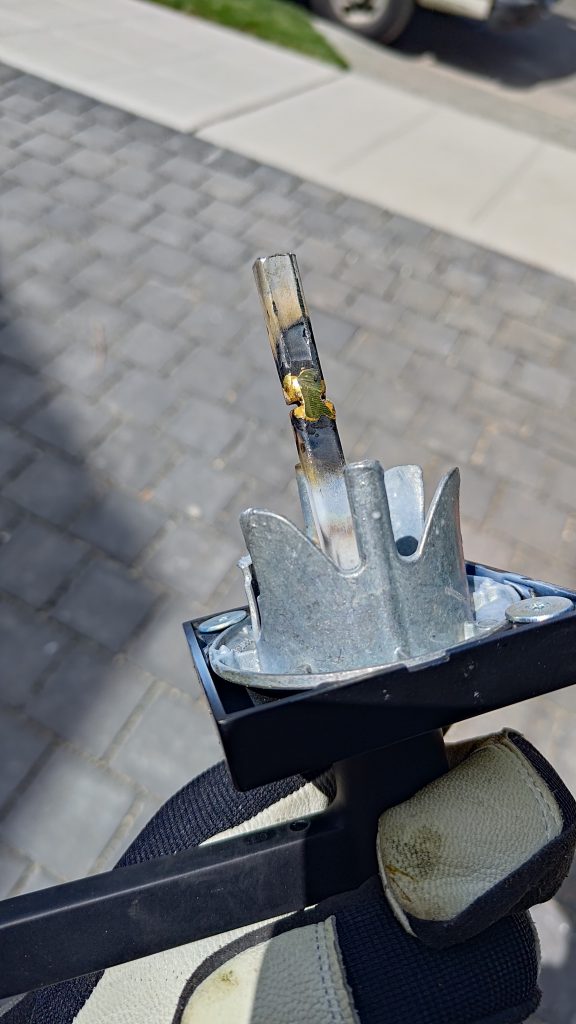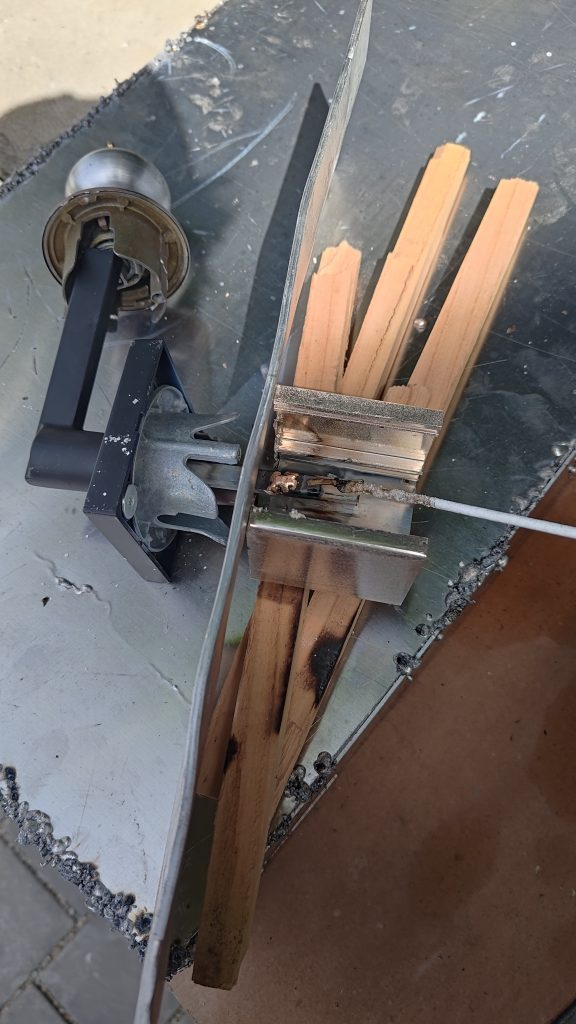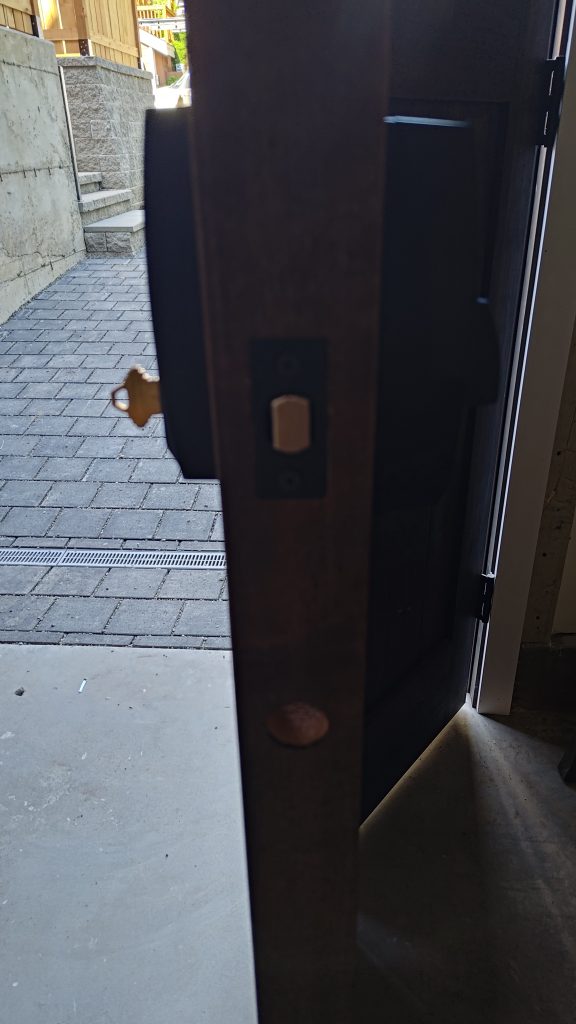Update: in a huge upset to the industry and customers alike, Napco/Alarm Lock have stopped selling their locks for thick doors. There isn’t much that we can do except migrate these customers away from the Alarm Lock ecosystem to the Schlage or Kaba ecosystem unless Napco figures out that this is mabye a bad idea. I have to replace an Alarm Lock chassis on a 2″ thick gate in two days, I will report if the standard chassis (also called lock body) works on 2″ thick doors or not.
This is a fairly big problem I run into once or twice a year. A rich customer buys a custom door that is two and a half inches thick and buys a doorknob from Lowe’s and wants me to install it. Not going to work.
Manufacturers make their doorknobs for the most common size of doors which are 1,3/8″ to 1,3/4″ thick. Most will accommodate a 1,7/8 or even 2″ door but beyond that you’re getting into the weeds as they say.
A hack will countersink the door to install the knob but that looks like trash. We want a handleset that will mount on the door and operate correctly and look good doing it. There are options but unfortunately they aren’t $25 doorknobs from Lowe’s.
Probably the cheapest and easiest thing to do is install a deadbolt with a thick door kit. Schlage’s B60 deadbolt is a versatile and decent deadbolt for the price and you can get a kit that will allow it to work in up to 4″ doors! Combine this with either a pull handle or two dummy knobs screwed onto the door surface and you’re there. If you want the door to latch you may want to install a ball catch or roller catch or two. These spring loaded devices act like detents to hold the door shut.
Second plan is go to build.com and select handlesets by door thickness. They have a decent selection. I don’t know how comprehensive it is. There are handlesets in both the Schlage C and Kwikset KW1 keyways. Conspicuously absent are commercial grade ones that take a more or less standard KIK cylinder.
My go to choice was once the Schlage A series which could be made to spec on a factory order but apparently Schlage is phasing out the A series due to lower demand. The A series knob used to be the standard but ADA and fire safety rules stipulate new construction and upgrades must use compliant hardware and knobs don’t fit the bill.
If your door isn’t prepped yet mortise locks are a great choice for thick doors. They are also very expensive in comparison with tubular locks. It is also a ton of work installing mortise locks. What’s a cheaper solution?
Rim mount locks are great for thick doors. These are locks that are screwed onto the inside of the door. A rim cylinder which is available in very long lengths can be installed on the outside along with a pull handle. Rim or surface mount locks can be either really cheap or really expensive, there isn’t much middle ground. My favorite rim deadbolt is the Yale original. They also make an awesome jimmyproof lock. It’s around $150 I think. There are a ton of cheaper clones that use these as a pattern.
If you like many of my customers with thick doors have money to burn you might also consider a mag lock or electric strike and pull handle. The downside to this is that no key override is available unless you set up an electric switch with a mortise cylinder or something.
If you are planning on getting a thick door or gate and want a lock on it be aware that factory lead times in the locksmith industry are unusually long. It might take a factory months to send a custom lockset! Alarm Lock makes a thick door chassis for their locks with free egress but not for their double sided locked lever.
If you know how to braze metal you can always extend locks indefinitely. In the following pictures I’ve cut the spindle off of an old doorknob and brazed it onto a new knob. The customer said they bought the correct kit according to Schlage but when you show up and find there isn’t the correct kit sometimes you just have to make it happen, Cap’n. You have be be careful because the spindle is steel but there is zinc alloy with a lower melting point that the mounting screws go into surrounding the spindle. You will definitely want to use some kind of heat shield. It might be smart to wrap the mounting screw holes with some kind of heat reflective material too although I found that a piece of scrap aluminum held in front of the screw holes shielded them enough to still work, though there was still some deformation (middle picture). After you braze the spindle you have to file the brazed material down enough to slide through the spring latch.



